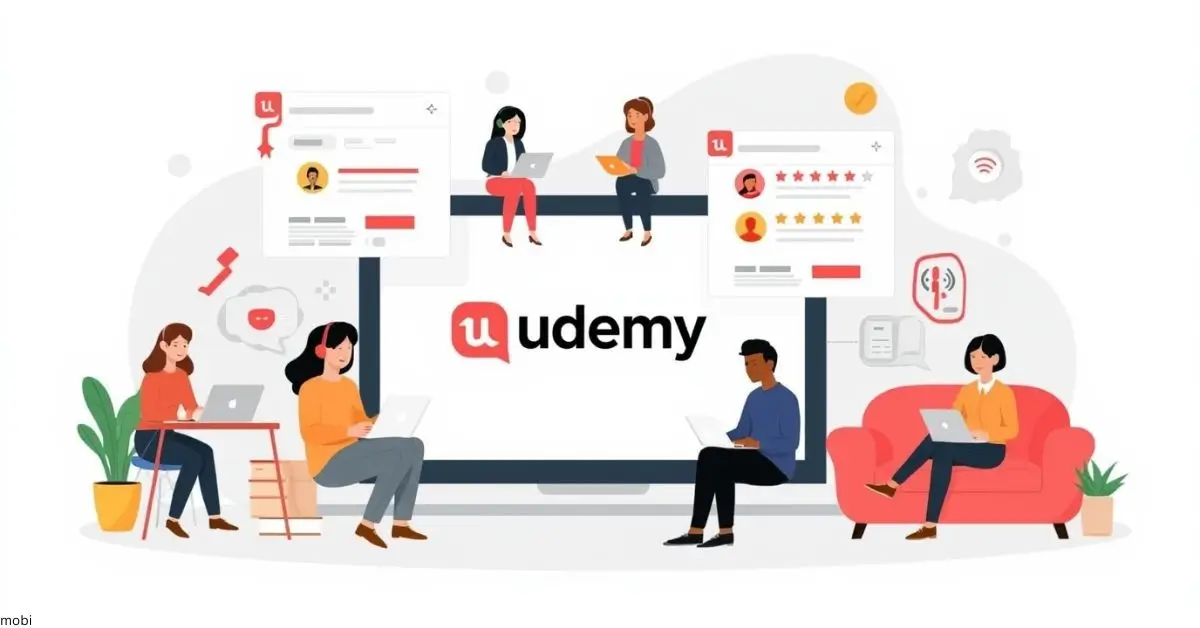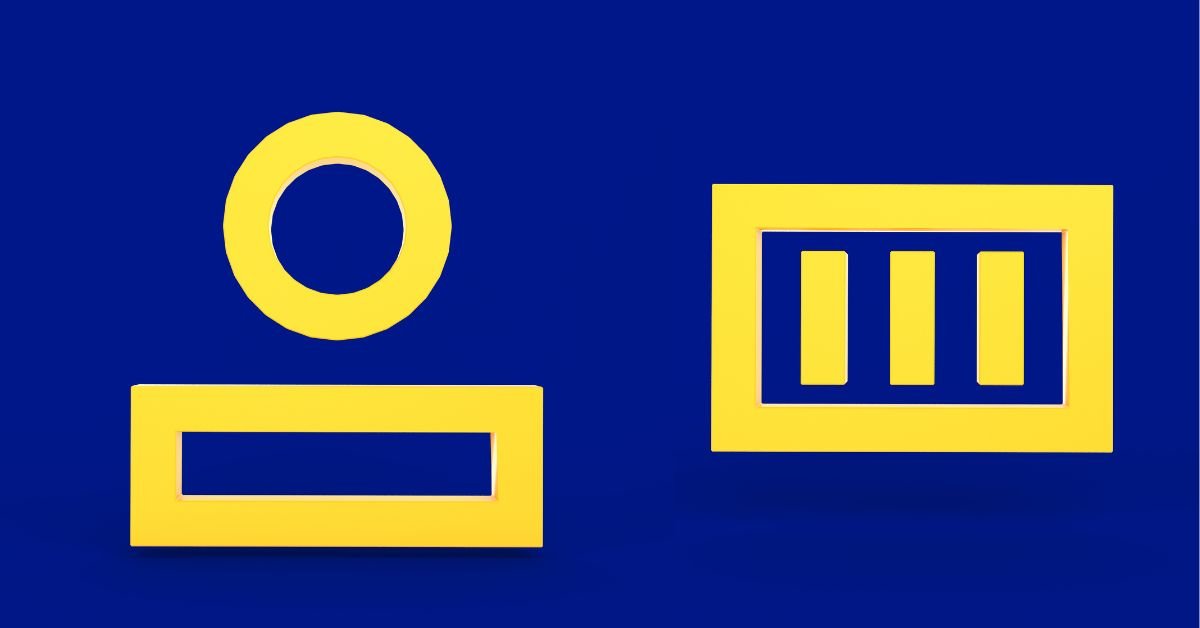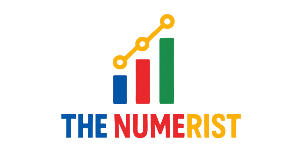EDUCATION
Using the Quadratic Formula

So, now that you know the answer to ‘What is the Quadratic Formula’ next I will show you examples of using it. Refer back to my last post to familiarize yourself with what the quadratic formula looks like. I’ve also explained there the nature of the roots of a quadratic equation. If you haven’t read it, I recommend taking a look as it might help you to visualize and to find the solution to a quadratic equation easier.
For my first example of using the quadratic formula to find the roots of a quadratic equation, let’s keep it simple.
x2 – 2x –3 = 0
Comparing this to the standard form of a quadratic equation, ax2 + bx + c = 0, we can equate the letter coefficients to the values provided. That is, we can say that a = 1, b = (–2), c = (–3). Now, we can simply substitute these values into the quadratic formula:
So, we have:
If you follow along with the arithmetic, you can see that we’ve solved the quadratic formula to show that the roots of the given equation are x = 3 and x = (–1).
Now, remember that I said in a previous lesson that you have to check your answers! Substitute these values back into the original equation, and you will find that they do indeed satisfy the equation. So, these are the correct roots!
Of course, you may have noticed that this question didn’t actually require the quadratic formula to solve for the roots. The quadratic formula worked well and got us the answer, but as you saw, it required a bit of work. And more work means more opportunity to make a mistake! You may have noticed that there was actually a faster way of solving the question. If you noticed that you could reduce the question down to (x – 3)(x + 1) = 0, you could simply let each set of brackets equal zero, and then find again that x = 3 and x = (–1) are the correct solutions.
Let’s try another one, adding some more of the previous math concepts I’ve gone over.
Using the quadratic formula, find the roots of:
2x3 + 3x2 = 4x
It’s looks a little more complicated than the last one, huh? It has higher order exponents, and it doesn’t immediately look like a quadratic equation, as the first example did. However, with a little bit of arithmetic, and using your skills from the math concepts I explained in my post about factoring, it will begin to look a bit more familiar and workable.
So then, apply grouping techniques to our question. Let’s bring everything to one side first though. Recall that the standard form of a quadratic equation equals zero.
2x3 + 3x2 = 4x
2x3 + 3x2 – 4x = 0
x(2x2 + 3x – 4) = 0
Looks a little better now, right? Maybe, something that might fit into the quadratic formula? Recall that the roots, or solutions, are any values of x that make the expression true. So, what we have derived up to this point is a product of two expressions that equals zero, and therefore the roots will be whatever values of x cause each part of the product to equal zero. The first (potential) root is obvious, from the first of the two expressions in the product: x = 0. (Substitute 0 back into the original equation to verify this is a correct root!) The second part, 2x2 + 3x – 4, will require more work, and if we let it equal zero, you can see that it will fit into the quadratic formula perfectly.
To prepare for the quadratic formula, we need to identify our a, b, and c values. They are: a = 2, b = 3, and c = (–4). Now, we just substitute into the formula, do the math, and come up with our root(s) for this part of the question!
So, these are our answers for the two roots to the quadratic expression part of our original question. These are the radical forms of the solutions, so they look way more complicated. But, often the quadratic formula doesn’t reduce all the way down to a nice, round number and you will be left with something like this. The last thing you have to do is substitute them back into the original question to verify the roots are true, and that is it! Of course, when you write your answers down, make sure you remember to include the roots from the first part of the question, i.e. the part we created by grouping and solved for x = 0.
That last question goes over a lot of math concepts and is definitely comparable to some of the more complicated math questions you may find in your homework or on exams. Review and study it and make sure you understand it. I’ll post another example as well soon, if anyone needs some more examples of using the quadratic formula.
EDUCATION
Udemy Legit Guide: Certificates, Reviews, and Value

If you’ve searched for affordable online courses, chances are you’ve come across Udemy. With thousands of courses across tech, business, design, and personal development, it’s one of the biggest names in e-learning. But many learners still wonder: Is Udemy legit?
This guide gives you a transparent, expert-backed breakdown of Udemy’s legitimacy, certificate value, course quality, and how it compares to other platforms. Whether you’re a student, professional, freelancer, or lifelong learner, this article will help you decide if Udemy is worth your time and money.
What Is Udemy?
Udemy is a global online learning platform founded in 2010. It hosts 200,000+ courses created by independent instructors. Unlike Coursera or edX, Udemy does not partner with universities but allows industry experts to upload and sell their own courses.
- Accessible: Affordable prices and frequent discounts.
- Flexible: Learn at your own pace with lifetime access.
- Diverse: Covers everything from coding and marketing to yoga and cooking.
Is Udemy Legit or a Scam?
The short answer: Yes, Udemy is legit.
Udemy is a registered company with over 64 million students worldwide and a strong reputation in the e-learning industry. Its courses are widely used by individuals, startups, and even Fortune 500 companies.
Why Udemy is Legit:
- Millions of verified student reviews
- Secure payment and refund policy
- Partnerships with businesses for workforce training
- Recognized by trusted media like Forbes and TechCrunch
Reference: Forbes has consistently listed Udemy as one of the leading online learning platforms in 2023–2024.
Udemy Course Reviews: Are They Worth It?
Udemy course reviews vary depending on the instructor. Because anyone can upload a course, quality is not uniform.
- Highly rated courses often come from industry experts with proven experience.
- Some cheaper or newer courses may lack depth.
Pro tip: Always check course reviews, ratings, and previews before buying.
Udemy Certificate Value: Do Employers Recognize It?
One of the most common concerns is: Are Udemy certificates recognized by employers?
- Value for Skill-Building: Certificates show initiative and continuous learning.
- Limitations: Udemy is not an accredited university. Certificates are not equivalent to degrees or diplomas.
- Practical Use: Great for showcasing on LinkedIn, freelance profiles, or job applications where practical skills matter more than formal accreditation.
Udemy Accreditation Status
Udemy is not an accredited institution. This means certificates do not carry the same weight as those from Coursera, edX, or university programs. However, many employers value the skills gained, especially in IT, business, and digital marketing.
Udemy vs Coursera: Legitimacy Comparison
| Feature | Udemy | Coursera |
|---|---|---|
| Accreditation | Not accredited | Accredited (with universities) |
| Pricing | Affordable, one-time fee | Subscription or pay-per-course |
| Course Instructors | Independent creators | Professors + experts |
| Certificates | Non-accredited | University-recognized |
| Flexibility | Lifetime access | Time-bound courses |
If you want accredited certificates, Coursera is stronger. If you want affordable skills-on-demand, Udemy is legit and practical.
Udemy Refund Policy Reviews
Another sign of legitimacy is a clear refund policy. Udemy offers a 30-day money-back guarantee, making it low-risk for new learners.
Best Udemy Courses (Legit and Popular in 2025)
Some courses consistently earn excellent reviews and credibility:
- The Web Developer Bootcamp 2025 – Colt Steele
- Microsoft Excel – Excel from Beginner to Advanced
- Digital Marketing Masterclass – Phil Ebiner
- The Complete Python Bootcamp – Jose Portilla
Is Udemy Legit for Professional Development?
Yes — if you choose courses wisely. Professionals use Udemy to:
- Upskill quickly without expensive tuition
- Gain tech skills like Python, JavaScript, or AWS
- Improve soft skills like communication and leadership
- Reference: A 2024 LinkedIn Workplace Learning Report noted that employers increasingly value non-traditional skill development platforms like Udemy for Business.
How Trustworthy Is Udemy as a Learning Platform?
Udemy has built trust through:
- Transparent reviews
- Secure payments
- Global instructor community
- Millions of success stories
FAQ’s
Is Udemy legit for learning new skills?
Yes, it’s a trusted platform used by millions worldwide.
Are Udemy certificates recognized by employers?
They’re not accredited but show initiative and practical skills.
Can I get a job with a Udemy certificate?
Alone, probably not — but combined with skills and experience, yes.
How does Udemy compare to Coursera or LinkedIn Learning?
Coursera offers accredited certificates; Udemy is cheaper and more flexible.
Are cheap courses on Udemy actually legit?
Yes, though quality varies. Always check reviews before enrolling.
Is Udemy worth it in 2025 for career growth?
Absolutely, especially for skill-based industries like IT, design, and marketing.
Can Udemy replace formal education?
No — but it’s an excellent supplement for practical, hands-on skills.
Conclusion
So, is Udemy legit? The answer is a confident yes — but with context. Udemy is a trustworthy, affordable platform for learning real-world skills, though it doesn’t replace accredited education. For students, professionals, and lifelong learners, Udemy is a valuable resource when courses are chosen carefully.
If your goal is practical skills and career growth at a fraction of the cost, Udemy is one of the most legit platforms available in 2025.
EDUCATION
Sq Meter Symbol: Powerful Tool for Precision

Sq Meter Symbol is the shorthand notation for “square meter,” the SI (International System of Units) measurement for area. It’s written as m²—that’s the letter “m” followed by a superscript 2. This symbol is used worldwide in real estate, architecture, science, and everyday life to represent the area of a two-dimensional space.
Why does it matter? Because using the correct sq meter symbol ensures clarity, professionalism, and accuracy—whether you’re designing a building, buying a home, or sharing data internationally.
How to Type the Sq Meter Symbol (m²) on Any Device
Typing the sq meter symbol can be tricky if you don’t know the shortcuts. Here’s how to do it on different platforms:
Windows
- Hold
Altand type0178on the numeric keypad for the superscript 2 (²). - Type “m” first, then use the shortcut for ²: m².
Mac
- Type “m”, then press
Option+00B2(or use the Emoji & Symbols viewer and search for “superscript 2”).
Mobile (iOS/Android)
- Type “m”, then long-press the “2” key to see superscript options, or copy and paste m² from this article.
Google Docs/Word
- Insert > Special Characters > Search “superscript 2” or just copy and paste m².
Meters Squared to Square Meters: Clearing Up the Confusion
A common question is the difference between meters squared to square meters. Are they the same? Not always!
- Square meters (m²): The area of a square with sides of 1 meter. For example, a room that’s 3 meters by 4 meters is 12 m².
- Meters squared (meters^2): Can mean the same as square meters, but sometimes people use it incorrectly to mean “meters times meters.” Always use m² for clarity.
Pro tip: If you see “meters squared” in a document, double-check the context to make sure it means area, not just a squared value.
Square Metreage: What Does It Mean?
Square metreage is a term used to describe the total area measured in square meters. It’s common in real estate, construction, and interior design. For example, “The square metreage of this apartment is 85 m².”

This term helps buyers, renters, and builders compare spaces easily, especially in countries using the metric system.
Square Feet Symbol vs. Sq Meter Symbol
In some countries, especially the US, area is measured in square feet (ft²). The square feet symbol is ft² or sometimes sq ft. In contrast, the sq meter symbol is m².
| Unit | Symbol | Used In |
|---|---|---|
| Square meter | m² | Most of the world |
| Square foot | ft² | US, Canada, UK (some) |
Conversion: 1 m² ≈ 10.7639 ft²
Square Root Copy Paste: Related Symbols and Shortcuts
While not the same as the sq meter symbol, many people also search for square root copy paste (√) when working with area calculations. Here’s how to copy and paste the square root symbol:
- Copy this: √
- Windows shortcut:
Alt+251 - Mac shortcut:
Option+V
Use the square root symbol for calculations, and the sq meter symbol for area.
Real-World Example: Why the Sq Meter Symbol Matters
A property manager shared,
“I once listed an apartment as 120 m2 instead of 120 m². A client thought it was a typo and almost skipped the viewing. Now, I always use the correct sq meter symbol for clarity.”
This shows how a small detail can make a big difference in communication and professionalism.
How to Convert Meters Squared to Square Meters (and Vice Versa)
If you’re working with area, you’ll often need to convert between units:
- To calculate square meters: Multiply length by width (in meters).
Example: 5m x 4m = 20 m² - To convert square meters to square feet: Multiply by 10.7639.
Example: 20 m² x 10.7639 ≈ 215.28 ft²
Always use the correct symbol to avoid confusion.
Square Metreage in Real Estate and Construction
In 2025, most property listings, blueprints, and contracts use the sq meter symbol for area. This standardization helps:
- Buyers compare properties easily
- Builders estimate materials and costs
- Governments set zoning and building codes
Tip: Always double-check the units when comparing international listings.
Square Meter Symbol in Science and Engineering
Scientists and engineers use m² for everything from measuring solar panel output to calculating land area for environmental studies. The symbol is recognized worldwide, making it the universal language of area.
Square Meter Symbol in Education
Students learn the sq meter symbol early in math and science classes. It’s used in geometry, physics, chemistry, and even art. Teachers often remind students to use the correct notation for full marks!
How to Use the Sq Meter Symbol in Spreadsheets and Reports
- Excel/Google Sheets: Type “m²” directly, or use “m^2” if superscript isn’t available.
- Reports: Always use the correct symbol in tables, charts, and diagrams for clarity.
Square Meter Symbol: Unicode and HTML Codes
For web developers and designers, here are the codes:
- Unicode: U+33A1 (㎡) or use “m” + U+00B2 (²)
- HTML:
m²orm²
Pros and Cons of Using the Sq Meter Symbol
Pros
- Universal understanding
- Professional appearance
- Reduces confusion in international contexts
Cons
- Typing can be tricky without shortcuts
- Misuse (like m2 instead of m²) can cause confusion
FAQs
Q. What is the correct sq meter symbol?
A. The correct symbol is m² (m followed by a superscript 2).
Q. How do I type the sq meter symbol on my keyboard?
A. On Windows, type “m” then Alt + 0178. On Mac, use the Emoji & Symbols viewer or copy and paste m².
Q. Is meters squared the same as square meters?
A. Usually, yes, but always check the context. “Meters squared” can sometimes be misused.
Q. How do I convert square meters to square feet?
A. Multiply the number of square meters by 10.7639 to get square feet.
Risks and Best Practices for Using the Sq Meter Symbol
- Always use the correct symbol (m²) in professional documents.
- Double-check units when converting between square meters and square feet.
- Educate your team or students on the difference between m² and m2.
- Use Unicode or HTML codes for web and digital documents.
Square Meter Symbol in 2025: Trends and Digital Tools
With more work happening online, digital tools now make it easier to insert the sq meter symbol:
- Auto-correct in word processors: Many apps now auto-format “m2” to “m².”
- Voice-to-text: Dictate “square meters” and see it appear as “m².”
- AI-powered calculators: Instantly convert and format area units.
Real-Life Example: Square Meter Symbol in International Business
A global architecture firm shared,
“We work with clients in Europe, Asia, and the US. Using the correct sq meter symbol in all our documents avoids costly misunderstandings and keeps our brand professional.”
Square Meter Symbol: Common Mistakes to Avoid
- Using “m2” instead of “m²”
- Mixing up square meters and meters squared
- Forgetting to convert units for international clients
- Using the square feet symbol (ft²) by mistake
Square Meter Symbol and Accessibility
For accessibility, always include the full word (“square meters”) in alt text or tooltips for digital documents. This helps screen readers and ensures everyone understands your data.
Final Thoughts
In 2025, the sq meter symbol is more than just a notation—it’s a global standard for clarity, accuracy, and professionalism. Whether you’re a student, a real estate agent, a scientist, or a web designer, using the correct symbol makes your work stand out.
EDUCATION
Inside GIPS: Fresh Stories from Grand Island Public Schools

Grand Island Public Schools (GIPS) continues to be a dynamic educational district in Nebraska, setting benchmarks in innovation, community involvement, and student achievement. As families, educators, and stakeholders keep a close eye on the evolving academic landscape, GIPS remains committed to shaping the future of learning by fostering inclusive practices, modern curriculum approaches, and student-first policies. These fresh stories from the district offer a closer look at how Grand Island is building a stronger educational foundation through community-driven initiatives, progressive leadership, and student empowerment.
Empowering Students Through Academic Innovation
At the heart of GIPS’s mission is a dedication to academic excellence. The district has embraced project-based learning, personalized education plans, and digital literacy integration to equip students for college, careers, and beyond. With the use of technology-enhanced classrooms and 1:1 Chromebook programs, students are gaining access to real-time resources that allow them to develop critical thinking and digital citizenship skills.
Additionally, curriculum enhancements in STEM (Science, Technology, Engineering, and Mathematics) programs are opening doors for middle and high school students. By encouraging hands-on experimentation and coding in elementary grades, the district aims to build a pipeline of future innovators and engineers.

Diversity, Equity, and Inclusion in Education
Grand Island Public Schools prides itself on serving a diverse student population that reflects the changing demographics of the United States. With over 40 languages spoken among students and families, the district’s multilingual programs, including Dual Language Immersion and English Language Learner (ELL) support, have become essential to student success.
Equity-focused strategies have been embedded into GIPS policies to ensure fair access to education regardless of a student’s background. The district’s cultural liaisons and community engagement specialists work to close achievement gaps, offering tailored support for underrepresented groups and students with special needs. These initiatives align with national priorities for equity in K-12 education and are shaping a more inclusive academic environment.
Teacher Development and Leadership Training
Recognizing that empowered educators lead to empowered students, GIPS has invested significantly in professional development. Teachers across all grade levels participate in ongoing training sessions centered on trauma-informed teaching, social-emotional learning (SEL), and differentiated instruction.
Furthermore, the district has launched leadership academies to groom future principals and instructional coaches from within its ranks. By nurturing talent internally, GIPS maintains continuity in its educational philosophy and strengthens leadership capacity at the school level.
In collaboration with local universities and teacher preparation programs, the district also hosts student-teacher residencies, bridging the gap between theory and practice. This fosters a pipeline of passionate, well-prepared educators ready to meet the unique challenges of 21st-century classrooms.
Extracurriculars and Student Voice
Beyond academics, Grand Island Public Schools has made student engagement a top priority. From award-winning debate teams to thriving arts and theater programs, students have ample opportunities to find their passions and express their creativity.
Athletics remain a cornerstone of school spirit and character-building. GIPS encourages participation in sports not only for physical fitness but also to foster teamwork, perseverance, and discipline. The district’s emphasis on Title IX compliance ensures equal opportunities for all students, regardless of gender or ability.
Student councils and advisory boards across schools give young voices a platform to influence decision-making processes. Whether it’s planning events, promoting anti-bullying campaigns, or suggesting cafeteria menu changes, students play a direct role in shaping their school culture.

Parent Engagement and Community Partnerships
The success of GIPS is strongly tied to the support and collaboration of families and local organizations. Parent-teacher associations (PTAs), booster clubs, and family resource centers provide avenues for parental involvement and two-way communication.
GIPS has also partnered with local businesses and nonprofits to expand opportunities for students, particularly in career and technical education (CTE). Internships, job shadowing, and mentorship programs expose high schoolers to potential career paths and equip them with real-world experience.
Additionally, community health partnerships ensure students have access to mental health services, dental screenings, and nutrition support—demonstrating GIPS’s commitment to the whole-child approach.
Facility Upgrades and Sustainability Goals
Modern learning requires modern spaces, and GIPS has embarked on major capital improvement projects to upgrade facilities across the district. These upgrades include secure entryways, advanced HVAC systems, and energy-efficient lighting.
Green initiatives such as school gardens, recycling programs, and solar energy pilot projects reflect the district’s broader sustainability goals. By involving students in environmental stewardship, GIPS is instilling responsibility and awareness from a young age.
The opening of new early childhood centers and career academies further exemplifies the district’s commitment to preparing students from cradle to career.
Responding to Challenges with Resilience
Like many public school districts, Grand Island Public Schools faced significant challenges during the COVID-19 pandemic. However, the district’s swift transition to remote learning and later, hybrid models, highlighted its adaptability and technological readiness.
GIPS also expanded meal distribution programs, mental health services, and Wi-Fi hotspots to support families during uncertain times. The district’s crisis response plan now serves as a blueprint for resilience and continuity in the face of future disruptions.
With a renewed focus on student attendance, mental health, and learning recovery, GIPS continues to evolve and adapt to ensure no child is left behind.
Looking Ahead: Strategic Goals for the Future
GIPS is not just reacting to present needs—it is planning proactively for the future. The district’s five-year strategic plan emphasizes student-centered learning, equity, family engagement, and operational efficiency.
Future goals include expanding dual-credit college courses, increasing high school graduation rates, and enhancing special education programming. GIPS is also exploring AI-driven personalized learning tools to tailor instruction and assessments based on individual learning styles and progress.
Community input continues to shape the district’s priorities, with school board meetings and town halls serving as key forums for collaboration.
Frequently Asked Questions (FAQs)
Q1: What makes Grand Island Public Schools different from other districts in Nebraska?
GIPS stands out for its diversity, equity-focused programs, strong community partnerships, and innovative curriculum that includes personalized learning and robust STEM education.
Q2: How does GIPS support English Language Learners?
The district offers tailored support such as Dual Language Immersion programs, ESL instruction, and cultural liaison services to ensure language is not a barrier to academic success.
Q3: Are there opportunities for students to gain real-world experience?
Yes, GIPS partners with local businesses to provide internships, job shadowing, and career mentoring through its Career Pathways and CTE programs.
Q4: How can parents get involved in GIPS schools?
Parents can participate in PTAs, attend school board meetings, volunteer in classrooms, and engage through digital platforms like parent portals and newsletters.
Q5: What kind of support is available for students’ mental health?
GIPS offers counseling services, peer support programs, and collaborates with health organizations to provide accessible mental health resources for students and families.
Conclusion
Inside GIPS: Fresh Stories from Grand Island Public Schools highlights a district that is deeply committed to nurturing every student’s potential through innovation, inclusivity, and partnership. As Grand Island continues to evolve in response to educational trends and community needs, its schools remain a vital part of the city’s heartbeat—where the future is being built one student at a time. Whether through academic growth, cultural celebration, or future-focused planning, GIPS exemplifies what it means to be a forward-thinking public school system.
-

 TECH3 months ago
TECH3 months agoApple iPhone 17: Official 2025 Release Date Revealed
-

 BLOG3 months ago
BLOG3 months agoUnderstanding the ∴ Symbol in Math
-

 EDUCATION4 months ago
EDUCATION4 months agoHorizontal Translation: How to Shift Graphs
-

 EDUCATION3 months ago
EDUCATION3 months agoThe Meaning of an Open Circle in Math Explained
-

 HEALTH4 months ago
HEALTH4 months agoGoodNever: Wellness, Simplified
-

 EDUCATION4 months ago
EDUCATION4 months agoHow to Solve Quadratic Equations 2
-

 EDUCATION4 months ago
EDUCATION4 months agoWhy Does m Represent Slope?
-

 ENTERTAINMENT3 months ago
ENTERTAINMENT3 months agoGoing Live: How to Stream on TikTok from Your PC
